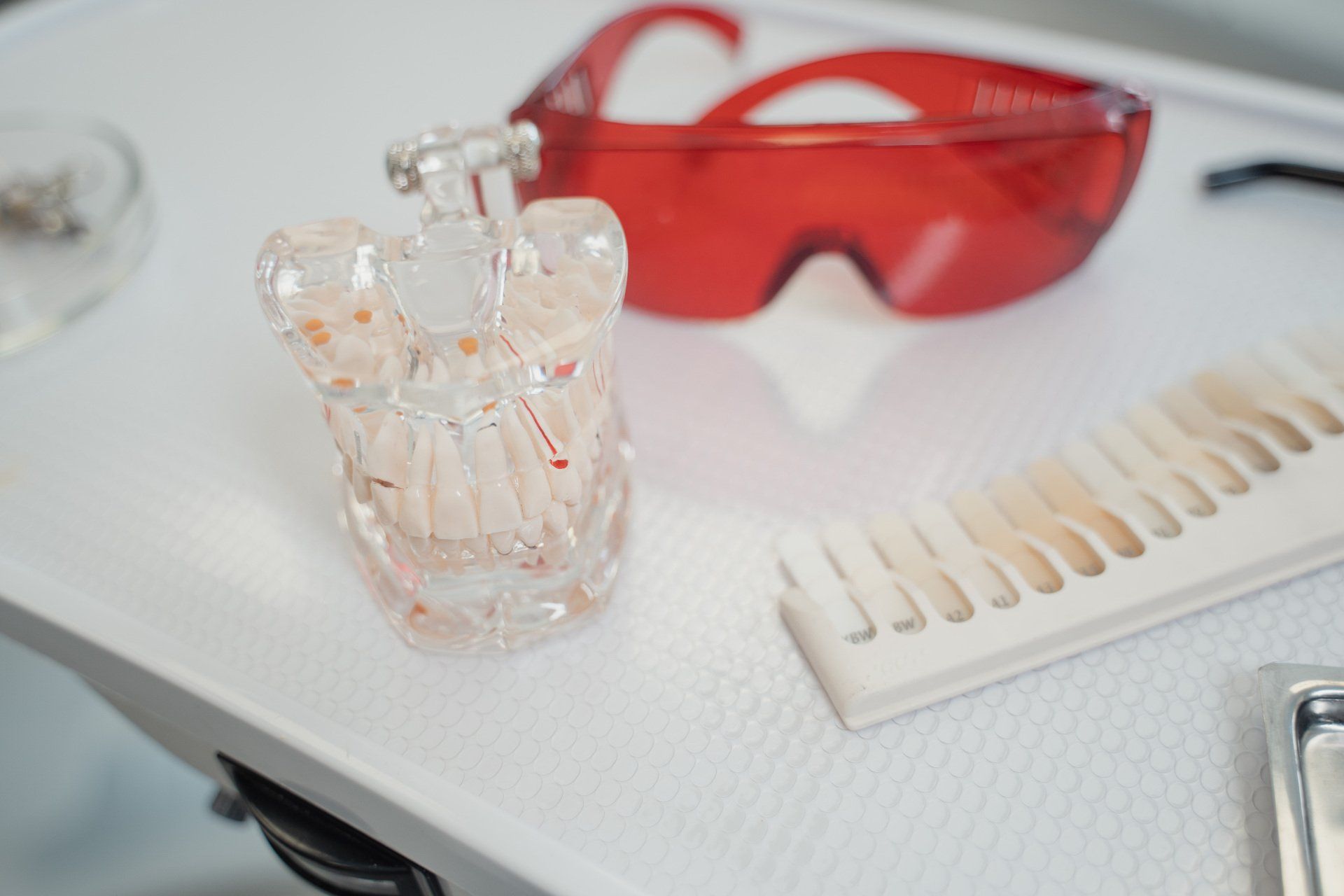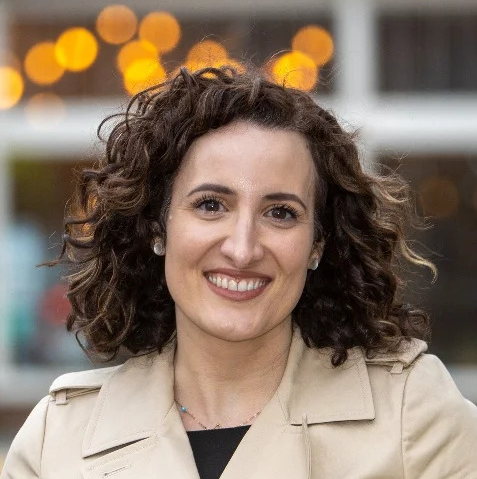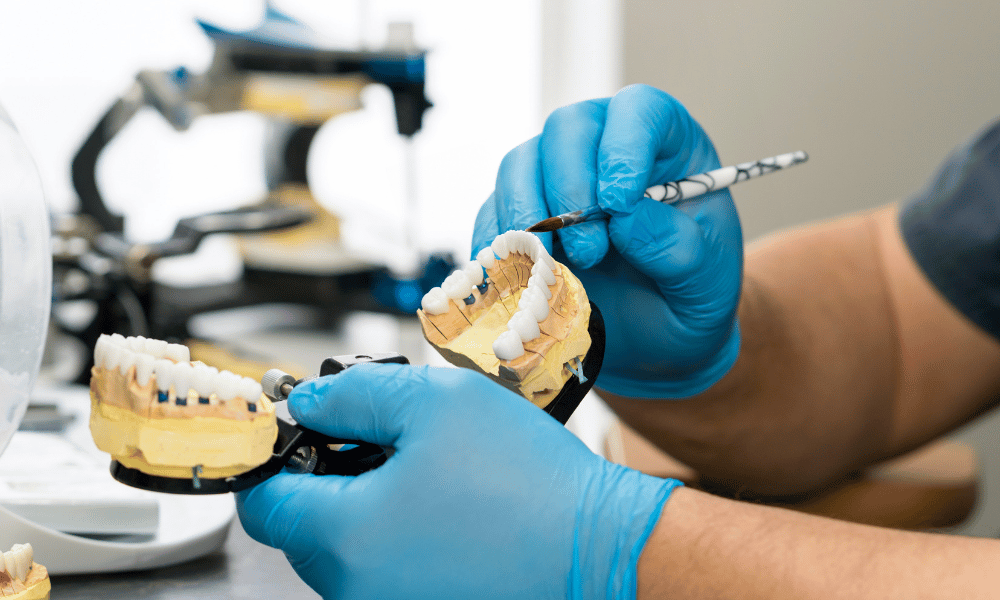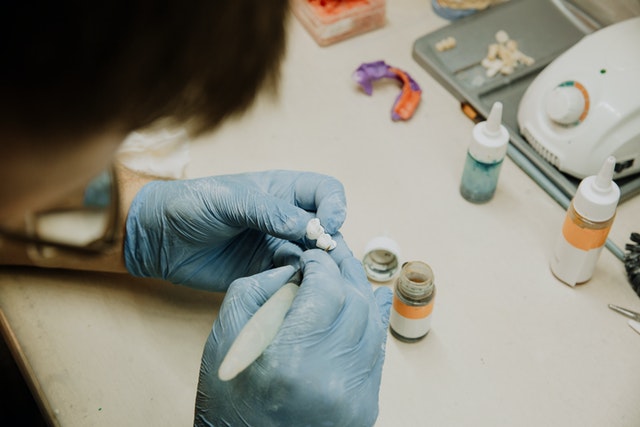January 04, 2022


Written by:
Nicole Donnelly
Finding a dental laboratory that can consistently provide dental restorations that use safe, lasting materials, look natural, fit right, and cause no harm to their other teeth can be challenging.
The following ten fundamentals of excellence can help you understand the difference between an average lab and an exceptional lab.
Evaluate your current lab against these standards of excellence and ask potential lab partners if they have incorporated these fundamentals in their workflows.
Does your current lab include a quality assurance checklist with every case? Labs that include this checklist with every case show their commitment to ensuring their processes are efficient and consistent.
To find labs and lab technicians willing to take responsibility for and stand behind their work, look for a lab that requires each completed checklist to be signed off by a dedicated master technician.
Working in partnership with your lab partner involves a great deal of communication. Look for a dental laboratory that provides the same dedicated and easily accessible point of contact for discussions about technical questions and case planning.
Does your dental laboratory save your personal digital settings? These are custom settings unique to your dental practice that will be used by the dental laboratory. Not all laboratories save these settings.
Ask your dental lab partner if they will save your digital settings and use those custom settings for future restorations.
Did you know most dental laboratories do not use microscopes when creating your storations? Due to the high cost of microscopes, the majority of dental labs cut costs by using high poglas.
When choosing a dental laboratory, look for a lab that has invested in 10 power microscopes and has made them a part of their everyday workflow. Your dental laboratory shows their commitment to getting the very fine details and fit right for you and your patients by investing in microscopes.
Dental restorations are frequently created using a sectioned cast model of a patient’s dental impression.
Consider working with a lab that uses an uncut solid model to create your restorations. An uncut model is as close as you can get to replicating your patient's mouth. This allows for more accurate and precise final fittings and reduces the risk of remakes and poor fitting restorations.
Most dental laboratories use metal zirconium dioxide as the material for their crowns. Zirconia offers the best balance of durability and natural aesthetics on the market today.
Once zirconia is milled, each zirconium dioxide crown is glazed and fired in an oven.
Glazing the zirconia is the process of applying a smooth, shiny coat to the surface of the zirconia to make the crown look like a real tooth.
Under a microscope, the glaze used on a zirconia crown looks like sandpaper, where particles of porcelain are held together with a binder.
Manually polishing the surface of the crown after glazing makes for a more natural looking tooth.
However the glaze on a zirconia crown gradually wears off leaving behind the non-glazed zirconia.
The surface of the zirconia crown, without the glaze, is coarse and rough.
At this point, the surface of the zirconia crown will begin to wear down the opposing healthy tooth causing damage to the patient's existing teeth.
You can protect your clients’ teeth and achieve long lasting results by choosing a dental laboratory that hand polishes and pumices restorations before and after glazing.
High quality labs will polish down the zirconia crown surface until it is smooth and glossy before glazing the crown.
If this process is completed first and the glaze eventually wears off, the remaining polished zirconia surface will not cause harm to its opposing dentition.
This process of polishing and pumicing a crown before and after glazing, lasts forever. The surface will never get rough again unless you grind the teeth in the chair. Once the glaze wears off, the zirconia crown surface will remain smooth and not cause harm to opposing teeth.
Most labs do not polish the zirconia crown surface before or after glazing. This is a key difference between an average lab and an exceptional lab.
For the most natural look, make sure your lab offers several full zirconia options including the most esthetic and durable full translucent zirconia in the creation of its crowns.
A full translucent zirconia combines the look of pressed ceramic with the strength of solid zirconia. It is more translucent at the incisal edge where it’s supposed to be and less translucent as it moves toward the gingiva for the best in esthetics.
Offering your patients a translucent, layered zirconia product for their dental restorations can improve esthetics and patient satisfaction.
In addition, your lab should provide the option of creating your restorations using a multi-powder segmented porcelain build up technique to create your anterior restorations with a true to nature appearance.
Missing this step will guarantee generic cookie crowns with no individual personality.
When your dental laboratory pours a model from a dental impression, the ratio of stone to liquid for the model must be exact. If the measurement is off, the final model will not be accurate.
Make sure your dental lab uses computer scales to weigh their stone and water. This prevents any variation in the consistency of the materials and allows for the same expansion rate for every model.
You’ll also want to check that your lab is performing a two step quality control process on their die stone measurements.
An alloy examination die should be used to check the accuracy of their investing and casting process.
The lab will use the examination die each month as a point of reference to verify the expansion of their investment used to cast your crowns because all casting investment is not consistent with its expansion and liquid adjustments must be made to compensate.
The benefit of an alloy examination die is that it will not change dimension or be abraided. This method ensures the crown will have integrity and an accurate final fit.
Most, if not all, dental laboratories use CAD/CAM digital imaging. When choosing a dental laboratory, look for a lab that uses five cameras instead of the typical three camera imaging.
The higher resolution five camera scan allows for a better fitting crown than a three camera resolution.
This means there will be better occlusion and a more comfortable fit. A higher resolution will also make it easier to see the fine details of each tooth.
The use of intraoral scanners to produce digital impressions has increased substantially in the past decade. Digital impressions now make up approximately 20% of all impressions. This is expected to increase in the future as practitioners become more skilled in use of intraoral scanners.
Your dental lab should have the capability to process both digital and traditional impressions.
Much of the quality of digital impressions comes down to correct use of intraoral scanners and taking time to make sure you receive complete, high quality imagery of the mouth.
Work closely with your equipment manufacturer to make sure you and your team are well trained on how to use intraoral scanners properly. Your dental lab can advise you if and when there are issues with the quality of the imaging and work with you to correct these.
Digital impressions can save a significant amount of time and effort both for the lab and the practitioner when done correctly.
However digital technology is not yet able to capture the fine details of more complex implant or hybrid denture restorations. Traditional impressions are still the most accurate and optimal choice for these types of cases.
Whether you prefer to use traditional or digital impressions, having a dental laboratory that uses five camera digital imaging will allow for the best restoration outcomes.
An exceptional lab partner plays a critical role in patient satisfaction, cutting down chair time, and improving your reputation.
When choosing a dental laboratory, take the time to ask each laboratory whether they follow these 10 fundamentals of excellence.
If these fundamentals of excellence are present, your dental laboratory has demonstrated they have the processes in place to consistently provide you with quality results that will create life changing experiences for your patients.
To learn more about PRO-Craft’s quality assurance process or to request a free starter kit, contact us today at 877.484.3522 or Allzplus@pro-craft.com.

Denture fabrication for edentulous patients is a meticulous process that involves effective case planning and a dental laboratory you can rely on for natural-looking esthetics and accuracy, so we’re...
Read More
Why should I send my dental lab work to PRO-Craft when I can get it for less from another lab? We answer that question in the video below. We also share one of the 10 fundamental processes that...
Read More
40 Years of Quality & Commitment: The PRO-Craft Story InTRUview visits PRO-Craft Dental Laboratory in Murrieta, CA to interview the team about their secret to becoming a leading industry standard for...
Read More